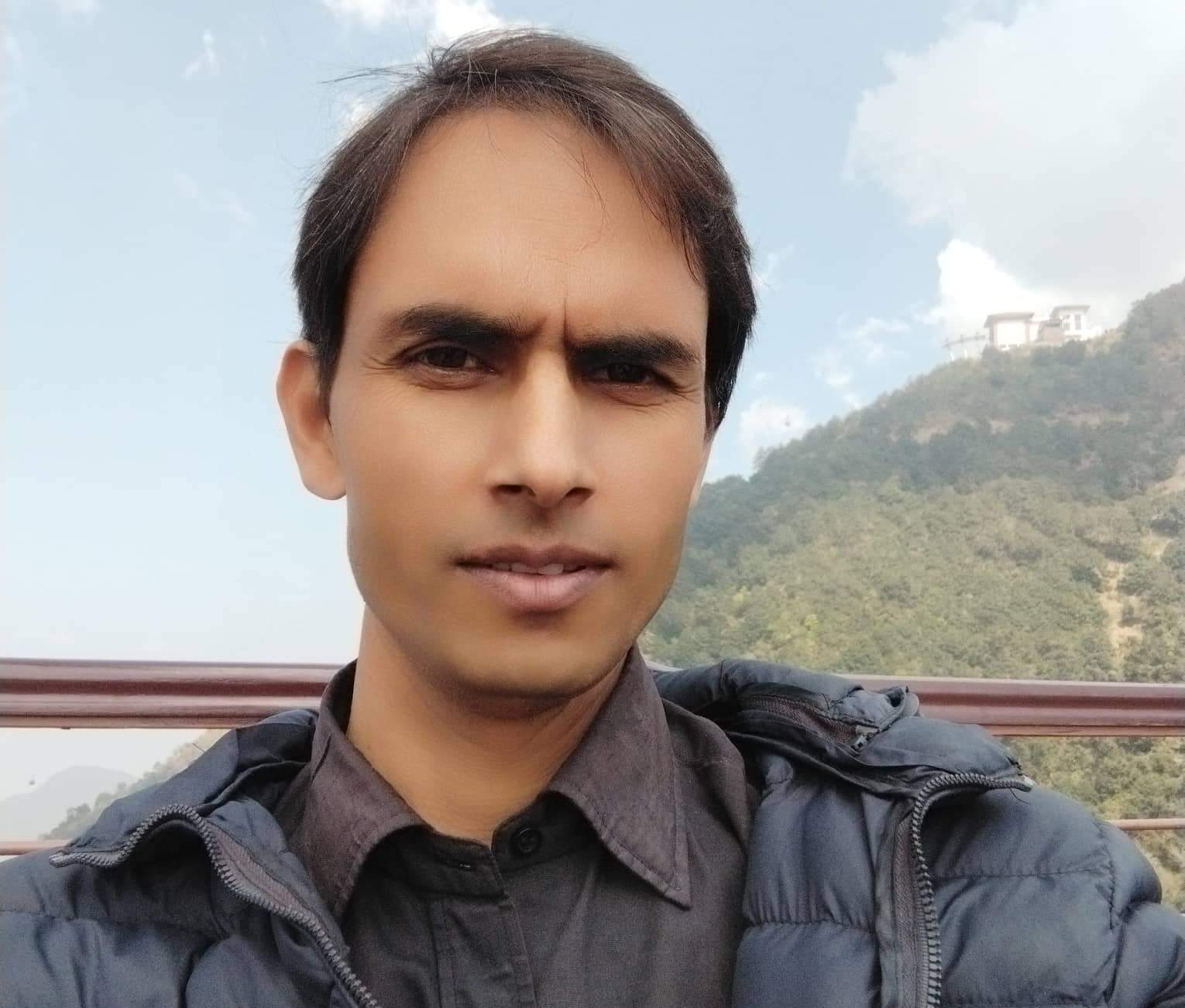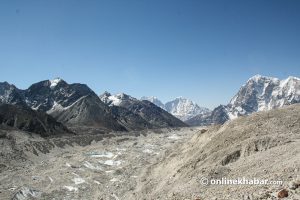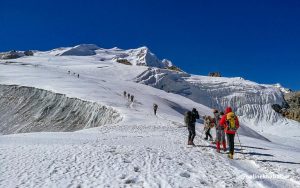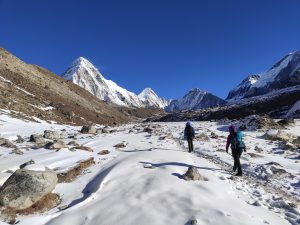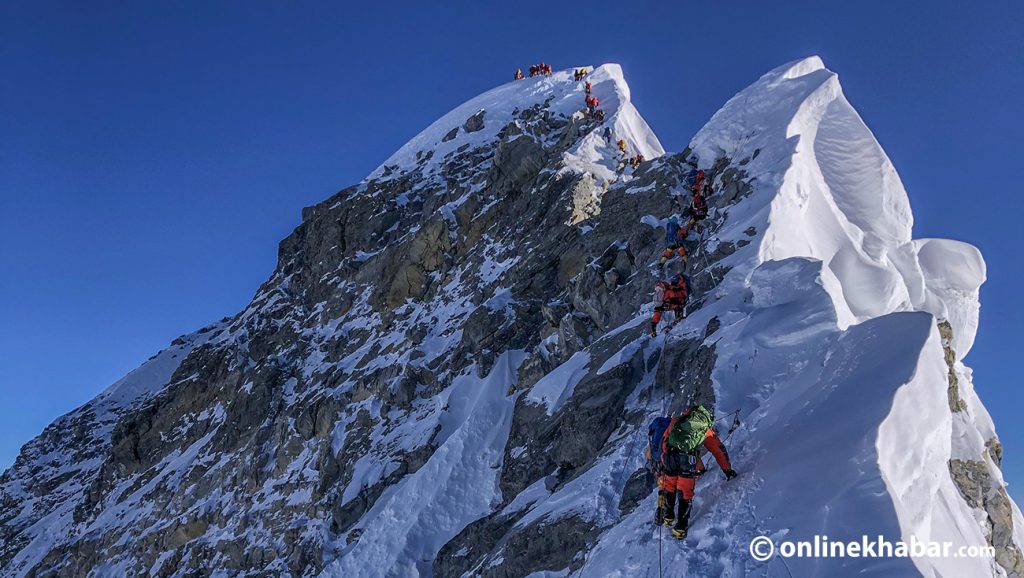
After toiling hard for over a month in the Khumbu region, Jason Bernard Keninson from Australia finally achieved his dream of standing on the summit of Everest on May 19. As he was descending from the summit with his guides, Keninson started to feel weak and collapsed at the balcony at an altitude of 8,500 metres.
Keninson was climbing with Asain Trekking. His team leader was an Indian national Abhishek Anand. Initially, reports emerged that Keninson had gone missing. The liaison officer Binod Gautam was also told Keninson was missing and as he had not seen Keninson’s dead body, he decided to report him as missing. However, the company urged Gautam to declare Keninson dead.
The Department of Tourism insisted on withholding an official declaration of death as per the Mountaineering Expedition Rules 2002, which requires a government official to see the body before pronouncing someone dead. For that to happen, Keninson’s body needed to be brought down to base camp after which Gautam could state Keninson had died.
Keninson’s guides informed his situation and the doctors at base camp stated he had suffered from high-altitude cerebral edema (HACE) and died as a result of it.
Gautam insisted he could not pronounce Keninson dead as rules clearly stated he needed to be brought to the base camp for him to do so. But Asian Trekking insisted. They told Gautam the guides had seen him die and he was not missing.
The expedition company, Asian Trekking, pronounced him dead regardless as his lifeless body still hangs on the fixed rope near the balcony of Everest.
Asian Trekking says they could not bring the body down due to a lack of resources and funds. Dawa Steven Sherpa, CEO of Asian Trekking, says that they had also left the body on the mountain as per Keninson’s wishes.
“He told us if he died we should leave him where he rests,” says Dawa Steven. “The insurance company he had used did not help either, which meant we had to be responsible for everything.”
The issue arose 10 days after Keninson’s death when the consular department of the Ministry of Foreign Affairs requested the Department of Tourism to issue a death certificate. The Department of Tourism was then compelled to issue the death certificate even though it had shown reservations to do so as Keninson’s body had not been brought down.
The consular department contacting the Department of Tourism came after pressure from the Australian Embassy and Keninson’s family. As per the Department of Tourism, Keninson’s family informed the Australian Embassy in Nepal about the necessity of a death certificate for various legal processes.
As per officials from the department, Keninson designated his girlfriend as the insurance beneficiary. Following his passing, both his family and girlfriend sought to claim the insurance payout, resulting in a competitive rush to secure and submit the death registration certificate.
“It is like Keninson’s family and his girlfriend did not care about his body. All they cared about was getting the death certificate so they could get the payout from the insurance company,” says Rakesh Gurung, the director of the department.
Under mounting pressure, the department eventually issued the death certificate on June 28. This certification is expected to ease the process of Keninson’s family making an insurance claim.
The department’s decision potentially opens the door for a USD 3 million insurance payout to the climber’s relatives. Nevertheless, Keninson’s body remains stranded on Everest.
Increased mortality rate and poor governance
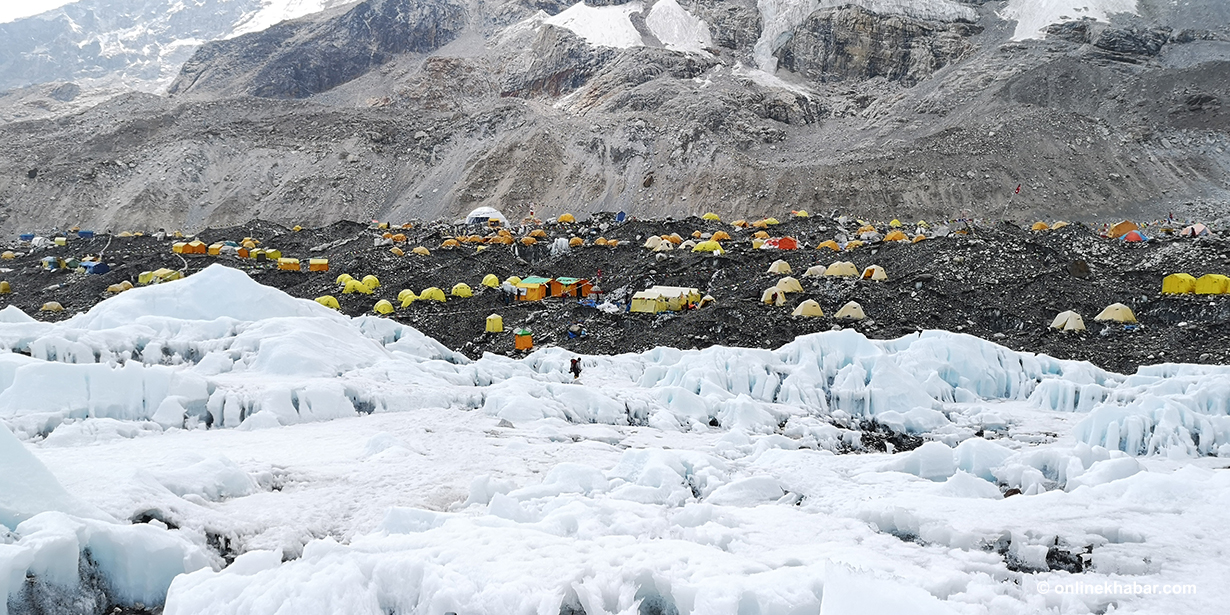
In 2014, an avalanche claimed the lives of 16 Nepali mountain guides, and a year later, a devastating earthquake at the base camp led to the deaths of 19 climbers. The Himalayan Database, an organisation tracking mountain and climbing data, notes that over 320 climbers have lost their lives in the Everest region to date. Official figures, however, do not specify how many of these bodies were brought down from the mountain.
According to Nepali mountain guides involved in the climbs, numerous bodies still rest in the upper camps of Everest. They say that encountering these bodies often demoralises climbers en route to the summit.
This season alone saw the death of 17 people on Everest. Among these cases, eight bodies were appropriately handled, while the remains of the other nine deceased climbers were left on the mountain, according to information provided by the tourism department.
As a consequence of accelerated snowmelt attributed to climate change, human skeletons—remnants of climbers from past years—are now resurfacing at the base camp. Such citings, over the course of the past few years, have become quite common, say seasoned climbers.
All of this is thanks to a rise in the number of people who come to climb Everest. The Department of Tourism has been issuing a record number of permits post Covid pandemic. This year alone it issued 454 permits to climbers from all across the globe.
The politics of missing and death
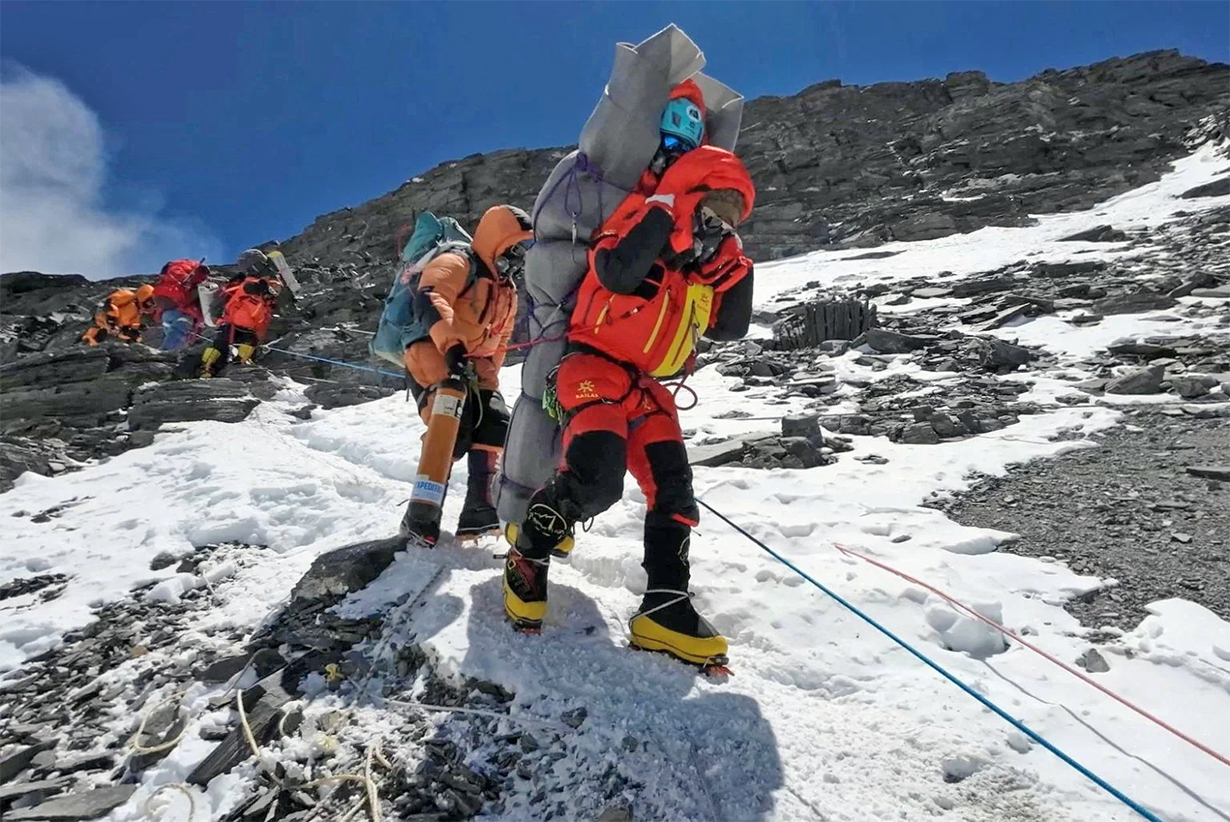
While certain companies successfully rescued climbers from the death zone, questions have arisen regarding others’ failure to recover the bodies of their clients, including Keninson. This has intensified inquiries into the circumstances surrounding the declaration of their deaths without proper body management, leading to suspicions about external pressures influencing the decision.
“I do not know why Asian Trekking did not bring back Keninson. It is an established expedition company that should have done the right thing. Let us hope they bring it back next year,” says Gautam.
It is clear how poor the dead body are managed in the mountains. The government, despite having clear laws, does not implement them as expedition agencies try to find loopholes and take advantage of their influence to get away with leaving the corpses on the mountain. As that is going on, the families of the deceased usually do not say anything as long as they receive insurance money.
According to the regulation, in cases where a death occurs and the status of the deceased body is uncertain, the expedition agency, climbing team and liaison officer along with the involved parties in search and rescue operations are obligated to submit a report to the ministry.
This provision has led some smaller companies to label deceased bodies as ‘missing,’ particularly when they are located at high altitudes or difficult-to-reach locations.
To oversee the climbing endeavours, the government dispatches teams of liaison officers to the base camp. However, not all of these officers reach the base camp. This year, only 33 out of the 70 designated liaison officers, tasked by the tourism department to manage the ascents of Mount Everest, Nuptse, Lhotse, and Pumori in the Everest region, successfully reached the base camp.
Individuals who reach the base camp often swiftly depart after a brief visit. Some liaison officers receive additional incentives from expedition agencies and overlook the company’s shortcomings as they are dependent on these companies.
And various liaison officers agree that they rely on expedition agencies.
“Once liaison officers are appointed, they must work with the resources provided by the expedition company,” says Khimlal Gautam a liaison officer. “How practical do you think it is when s/he has to depend on the expedition outfit while at base camp and then take action against the same outfit?”
This year, the Department of Tourism entrusted the Tourist Police with investigating all Everest deaths and submitting a comprehensive report, after learning how expedition agencies started to leave bodies on Everest.
The report was submitted in which it was revealed there was a lack of oversight when it came to the management of dead bodies on Everest.
“This has come too late. This type of research should have been conducted long ago,” says DSP Sugandha Shrestha of Tourist Police.
Shrestha holds the belief that permitting expedition agencies to report disappearances according to their discretion has not contributed to this situation.
Unaccessible insurance policies offered by foreign companies
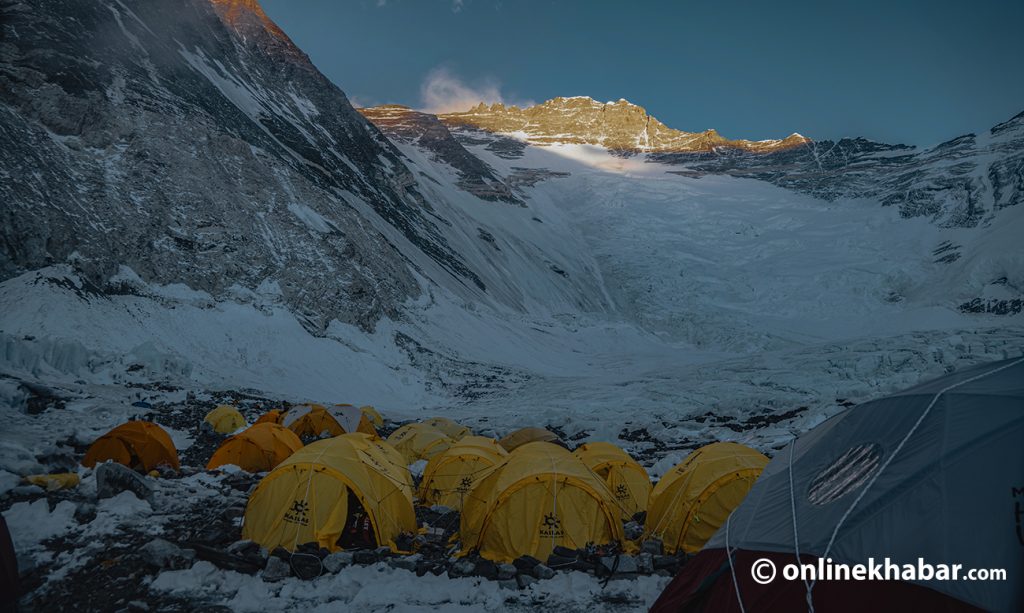
In the past, the department issued death certificates based on the recommendations of the expedition leader, liaison officers and the expedition agency. The department this year wanted to change it as it believed it prompted expedition agencies to leave the bodies on the mountain.
In order to ensure the bodies were brought down, the department decided to issue death certificates after the bodies were brought down. However, this new plan did not come to fruition as seen in the case of Australian climber Keninson.
Expedition agencies contend that the difficulty in managing deceased climbers’ bodies on Everest stems from a scarcity of skilled human resources, treacherous terrain, harsh weather conditions, and limited funds for transporting bodies to the base camp. However, former department employees are unwilling to entirely accept these explanations.
“Dead body management does indeed pose several challenges. But the current significant issue is the emerging trend of leaving dead bodies in the mountains for financial reasons,” say officials of the Department of Tourism.
Mira Acharya, the former director of the department says that the expedition agencies have a vested interest.
“They say they do not have the human resource and say the family asked them to keep the body there. These are just excuses. Leaving a human body in a world heritage site, in such circumstances contradicts legal, religious, environmental, and humanitarian principles,” says Acharya.
Issues of insurance claims
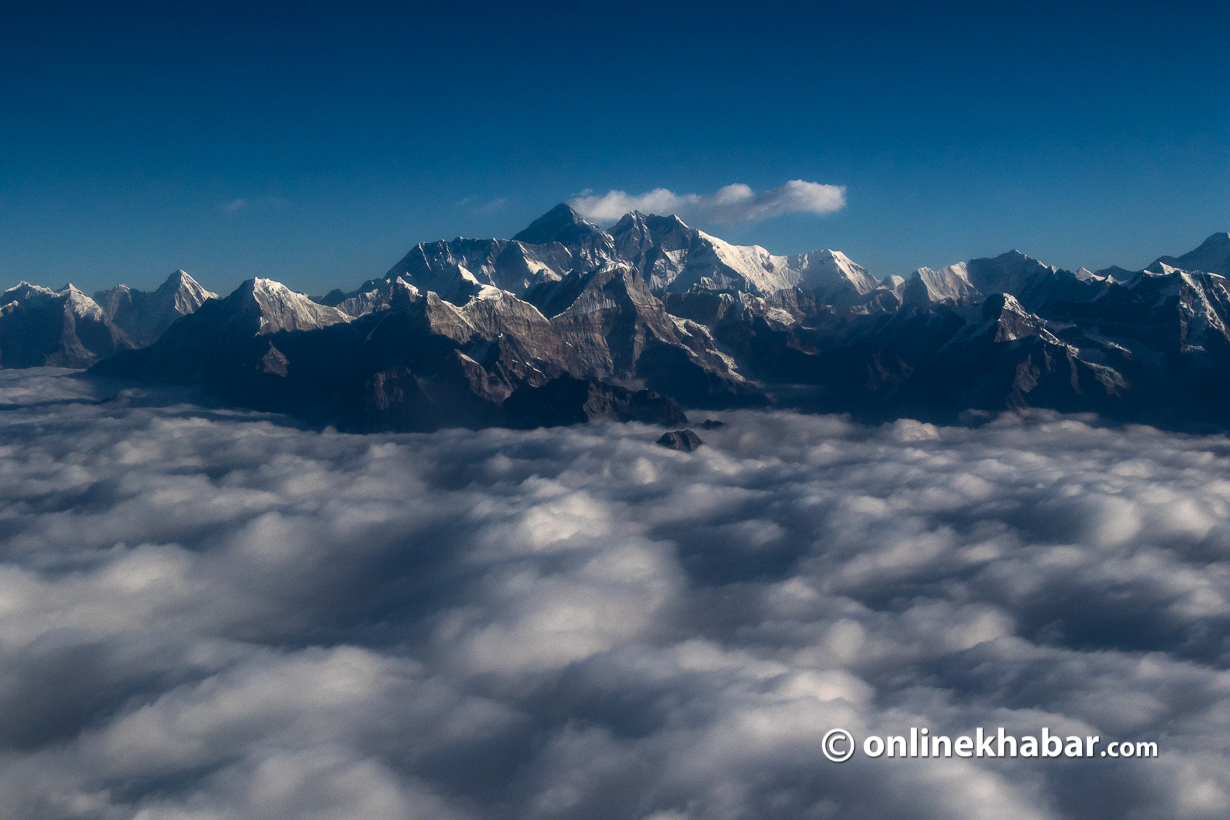
Climbers, among others, holds substantial insurance coverage. Foreign climbers are insured for millions of rupees before embarking on their expeditions, while Nepali mountain guides are insured for Rs 1.5 million.
This insurance amount is intended for the search, rescue, and management of injured or deceased individuals resulting from calamities in the mountains. However, Nepali expedition agencies and the tourism department lack access to the insurance policies offered by foreign companies. In the event of an accident or climber’s death, insurance companies exclusively engage with the climber’s family.
Regardless of the insurance sum, if the family opts against using the funds for body management, the climbing company or tourism department could face challenges. Nepal cannot compel anyone to utilise insurance money for corpse management. Budget constraints prevent government entities from repatriating bodies stranded in the mountains.
For instance, Australian climber Keninson arrived to climb Everest with insurance coverage amounting to around USD 3 million. To secure the insurance payout, his family pressured the Nepali government to authenticate his death via the embassy. The insurance company demanded official verification of Keninson’s demise before disbursing the funds.
Numerous parties, from expedition company representatives and government officials to staff at the Australian Embassy in Nepal, urged written certification of the climber’s death. Under this intense pressure, the department bypassed certain provisions of mountain climbing regulations and issued a death certificate for Keninson based on registration law.
Given the department’s declaration of death, the insurance money is slated to go to Keninson’s girlfriend or family members as beneficiaries. However, the question remains about who will bear the cost of managing his body. Dawa Steven from Asian Trekking says, “If the family takes care of it, fine. If not, I’ll take responsibility to bring it down for the reputation of my company.”
This underscores the urgency for a comprehensive, long-term strategy for mountain corpse management and raises inquiries regarding Mount Everest’s status as a world heritage site.
Despite allocating substantial funds each year for the Mountain Clean-up Campaign, effectively managing the bodies has remained a challenge. While four older bodies were attended to in 2019, such efforts have waned more recently as dead bodies pile up on Everest.
This story was translated from the original Nepali version and edited for clarity and length.


